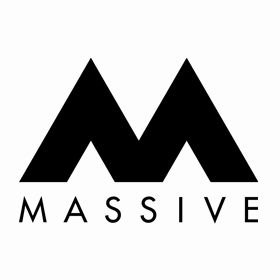
8 Benefits of a Project Management Plan
If you’ve ever felt that keeping the project team on track is like herding cats, then it may be time to start implementing a project management plan.
Just as you wouldn’t set out on an important journey without a clear idea of your destination and which road you’re going to take, a good project management plan sets out the direction you’re heading in, and how to know when you’ve got there.
As agency leaders, establishing a thorough project plan should be an essential step during the project planning phase. In this article, we will look at what a project management plan is, and discuss the benefits that project management plans can bring to your team – as well as to your next project.
What is a project management plan?
A project management plan is a document detailing everything your team needs to know about the project. As with other parts of the project planning process, your written plan needs to include input from project managers, key stakeholders, and the rest of the team.
A project plan document usually contains:
- the project schedule and timeline
- the project’s scope and deliverables
- human resources and cost management plan
- risk management plan
- plan for the management of project stakeholders, organizational processes, and other essential business information that can affect the implementation of the project.
This formal document can get quite long, and so the Project Management Institute (PMI) recommends producing an executive summary as well, which presents the highlights in an easily-accessible format.
Although creating the plan is one of the project planning steps, the document should be dynamic – meaning it is reviewed and updated throughout the project phases to reflect changes that are occurring.
While creating the plan might take a little time at first, you can generate a project management plan template that’s tailored to your industry and the type of project you manage. This will help you save time in the future, and help create consistency in your project planning processes.
What are the benefits of a project management plan?
As an agency leader, you may wonder if investing so much time in detailed project documentation is really the best approach. After all, an immaculate plan is all well and good. But can it really capture the reality (and unpredictability) of working on creative, digital projects?
Well, the short answer is that you certainly can run a project without a project management plan. But it will help make your life easier at various points in the project management life cycle.
Here are 8 benefits of a project management plan.
1. Defines project scope, boundaries, and deliverables
Bringing your stakeholders together in a project management planning meeting helps you create the foundations of your project. The first step is to define the scope of the project, which helps you lay out the limitations and boundaries of the project, as well as to ensure clarity on the deliverables you’ll be providing.
As part of planning for scope management, you need to make clear at this stage how changes are to be handled. It’s almost inevitable that some aspects of the project will need to be adapted once things are underway, and this is okay – so long as you’re all in agreement about how this should happen. Scope management allows you to balance both client and team expectations.
2. Gets everyone clear on budget and timelines
The project manager can establish transparency with the team by including clear information on the project’s budget and timeline. This can be used for schedule development, as the scope is translated into a work breakdown structure (WBS), to ensure all tasks are completed at the right point in the project timeline.
3. Establishes the resource requirements for the project
The complete project plan should also include a resource management plan, listing out the essential resources that you will need to complete the project successfully. In addition to the number of working hours required, your resource plan should indicate the expertise needed from the project resources at different stages.
You can try to map this all out in a spreadsheet, but it’s not recommended: it’s far too easy to create errors and end up replicating them in a way that causes significant problems once everything is underway.
A resource management tool like Runn takes the complexity out of this task. It can help you map your resources and timeline, so you can accurately allocate resources across multiple projects and ensure there are no clashes or overallocation.
4. Defines what success looks like for the project
One lesson we learn early on in project management is that different people have different definitions of “done”. The clearer you are on the targets for your project, the easier it is for all involved – team members and clients alike – to assess whether those goals have been met.
As well as ensuring you meet your commitment to the client, this can reduce scope creep arising as a result of unclear expectations.
Clarity on a project’s objectives also helps reduce wasted resources, which can happen when people start taking the project in the wrong direction due to misunderstandings.
5. Helps you identify risks (and decide how to respond to them)
Having a project risk plan as one of the main components of a project management plan increases the likelihood of project success. It helps the team know how to respond to risks as they arise, and ensures that adequate resources will be available in the case of something going wrong.
It is important to revisit the risk assessment at intervals throughout project execution, as the project constraints may have changed during the project life cycle.
6. Helps you establish how to report on the project
Your project plan should establish what reporting measures and metrics will be used to report on the project and evaluate its progress. The details you choose to include will vary depending on your project management methodology and the type of project you’re working on.
Nevertheless, a project plan enables you to generate functional project status reports that indicate all the details needed for the project’s successful completion.
7. Outlines how project communications will be managed
Including a communication management plan within your project plan template helps to ensure communication channels are clear from the project planning stage. This includes when, how, and with whom different aspects of the project should be communicated, both internally and externally. Utilizing a daily planner can aid in organizing these communications effectively, providing a structured approach to managing interactions with clients and team members alike.
For large or complex projects with several points of contact, the use of project planning tools can help monitor communications with the client, as well as offer you a quick-access view of where each team member is up to in their project tasks. This also ensures each team member is accountable for their project deliverables.
8. Helps you with stakeholder management
A stakeholder management plan can form part of your overall project plan, to outline how stakeholder relationships are to be managed. With a clear plan in place for this vital element of your project operations, the client experience is more likely to be calm, controlled, and consistent across projects.
By outlining how regularly you will engage with your stakeholders, how you will update them on the project’s progress, meet their expectations, and analyze their feedback, you can build strong relationships with them throughout the project timeline.
Needless to say, happy clients are more likely to become repeat clients. So it is worth drawing the dots between the time invested in planning and documentation at this stage, and the clients that come back later down the line because they were impressed by the service they received.
Wrap-up
While the variety of digital agency projects adds excitement to the job, it also leaves the team at risk of missing an objective or losing track of how each specific project is to be handled. But a project management plan brings all the key information into one place, so your team has a single point of reference for any queries.
Your project management plan should also detail which software tools you will be using throughout the project lifecycle – a consideration that shouldn’t be overlooked, as it can make the difference between plain sailing and stormy seas.
A platform like Runn facilitates resource management across all projects that your agency is handling, giving you the oversight you need to create operative strategies and solutions and stay one step ahead of resourcing risks. It also helps forecast trends based on your current capacity, utilization, and financial patterns, so you can improve your project planning with each new challenge you take on.
If you’re looking to take your project and resource planning to the next level of ease and professionalism, get things underway with a project management plan – aided by Runn.























